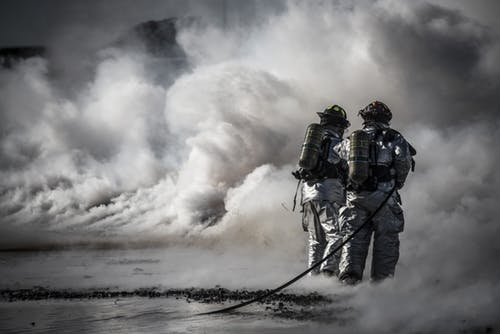
Creating an Effective Workplace Evacuation Plan
A fire evacuation plan covers what employees should do in the case of a fire at work. You can guarantee that workers understand how to safely and promptly exit the building in the case of a fire by designing a high-quality evacuation plan that is routinely practiced.
A solid emergency evacuation plan is your most significant security against natural and artificial disasters. It’s impossible to foresee every aspect of every probable situation that your business could confront. The most efficient strategy to save lives and assist your organization to go back to regular operations as quickly as possible is to have a thorough but adaptable evacuation plan.
Preparing for an Emergency
Your company or business should arrange various safety training classes, ranging from general workplace safety to fire prevention and protection for the benefit of your workers’ health and safety. The development of an evacuation plan is a critical component of any company’s workplace safety strategy, and it should not be overlooked.
1. Define Roles and Responsibilities
Organization is the key to an orderly evacuation. A clear chain of command will ensure a quick evacuation in the case of a building fire. Before planning your company’s evacuation, determine who has the authority to order it and who will lead the strategy.
Select an emergency coordinator to handle all response activities. This is usually a senior security or health and safety official. Most businesses have distinct IT and physical infrastructure shutdown protocols. Assign necessary persons to finish shutdown activities before departing to prevent data loss or damage. Floor supervisors will check each area and conduct roll calls to determine whether personnel are safe.
2. Communication plan
If there is a fire, you must first tell workers so that they may escape the premises, followed by the fire department. Customers, the news media, and other organizations such as community leaders, top management at your firm, suppliers, transportation partners, and even government authorities may need to be informed about the fire, depending on your workplace.
While ensuring that everyone is safely evacuated from the building, good internal communication, and cooperation with the restoration company Rochester are essential.
3. Evacuation Route and Assembly Points
Determine which evacuation routes are the safest for each region of your institution. Consider which paths will be the safest for employees of all physical capacities. Avoid taking courses that might put personnel in danger. For example, evacuation routes should avoid combustible storage cabinets in an industrial site.
Your evacuation plan should contain enough routes so workers may still leave if one is blocked. Determine where employees should gather after they have exited your facility. By gathering personnel at defined muster sites, you may perform roll calls to establish who is safe, still in danger, and needs first aid in your institution. Place signs indicating these evacuation routes and muster sites across your facility.
4. Fire Suppression and Preventive Tools
Your workplace should have many fire suppression and prevention technologies. Keep an eye out for fire extinguishers, fire detectors, and sprinkler systems. Whenever possible, instruct employees on using fire extinguishers and trigger fire alarms. Above all, keep your fire suppression system checked and serviced.
These systems are vital for PuroClean of Northwest Rochester. If you do not own the building, communicate with the building management regularly to maintain and inspect those systems.
5. Conduct Evacuation Drills
Every year, conduct evacuation exercises. Some workplace hazards or natural disasters may need local emergency services to be included in your practices. Drilling helps staff learn escape routes. It also helps emergency managers understand their outstanding obligations.

